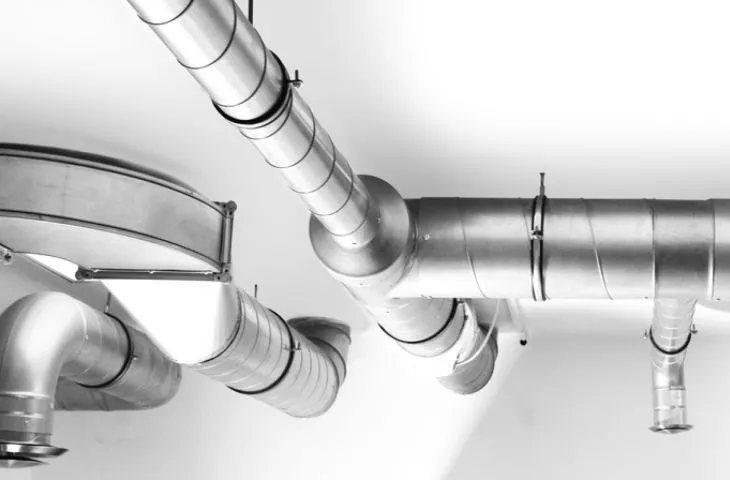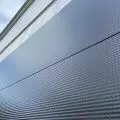Ventilation system components - choose consciously
From the series "Heating, ventilation, air conditioning - inspiration and solutions 2020".
An effective ventilation system is one of the key elements of any modern building, regardless of its purpose - it is just as important in apartments and public buildings as in industrial facilities. Although often when thinking about ventilation installation we focus mainly on devices such as fans or air handling units, in reality it consists of many components, each of which plays an important role that ultimately affects the proper functioning of the installation.
What is the task of the ventilation system?
Ventilation systems are designed to remove stale "polluted" air from the interior, while introducing fresh air from the outside. However, this basic principle does not fully capture the range of possible functions of modern ventilation. These include humidity control and air filtration, as well as heat recovery (recuperation). Preventing or minimizing exposure to any airborne contaminants is crucial in the context of occupational environments - especially industrial ones. We must remember that we spend almost 90% of our time indoors and the quality of the air we breathe is crucial to our comfort and health.
The main components of the ventilation system
Of course, specific types of ventilation systems may "require" specific components responsible for their unique features and functions. For example, all components of a smoke ventilation system, that is, an installation responsible for removing hot gases and smoke from a fire area, must meet specific fire resistance criteria. Nevertheless, there are basic components that can be found in all types of ventilation systems. The following list includes some of the basic components of a ventilation system.
Rectangular ventilation ducts
© ALNOR
1 Ventilation ducts
The ventilation ductis responsible for transporting and distributing air through the ventilation system. A network of ducts connects all other components of the system, ensuring uninterrupted flow according to the intended direction. Typical ventilation is made of galvanized sheet metal, the production of ventilation elements from acid-resistant or aluminum sheet allows them to be used in unusual places with significantly increased humidity or in places where ventilation pipes come into contact with chemical agents.
Ventilation ducts can also be divided according to their design into:
- round spirally wound ducts, so-called spiro
- circular welded ducts
- flexible flex ducts
- semi-rigid ducts (mainly used for mechanical ventilation with heat recovery)
- rectangular ducts.
The most common types of ducts used in residential and industrial ventilation systems are rigid spiral ducts and rectangular ducts.
2 Roof components - ejectors, cowls and bases
The termination or beginning of the ventilation system is located on the walls of the building or on the roof where roof exhausts or intakes are used. These elements either supply fresh air from outside (intake) or exhaust stale air (exhaust) to the outside. Intakes and exhausts, acting as the termination of the installation, according to legal regulations, should also protect the inlet of the ventilation duct from wind, rain and snow.
Ejectors, roof air intakes
© ALNOR
Roof cowls are mounted on top of chimneys as the termination of flue, smoke and ventilation ducts. Their use significantly improves chimney draught and protects the ducts from adverse weather conditions. The problem of terminating ventilation flues and chimney shafts is often underestimated. However, a well-chosen chimney cap can improve the performance of a gravity ventilation system, improves the stability of the chimney draught in the fireplace, affects the constant level of air exchange in the system.
3 Air flow regulators
The task of air flow regulators is to maintain the desired air expenditure in the various branches of the installation regardless of pressure changes in the ventilation ducts. This significantly simplifies the design of the entire system, but due to the noise generated as well as savings over the life of the system, low initial pressures should be sought. Flow control can be carried out in both supply and exhaust ducts.
Thereare several basic types of regulators:
- constant flow regulators with a fixed setpoint;
- air flow controllers with switching between two setpoints (V ̇min, V ̇max,);
- constant air flow controllers with variable setpoint output
- VAV variable air flow controllers.
Air dampers, regulators
© ALNOR
4. acoustic dampers
As the name suggests, the main function of acoustic silencers is to reduce the noise generated by installations. This serves to provide acoustic comfort to the occupants of the premises. Attenuators reduce noise in ventilation ducts created by such ventilation equipment as fans or air handling units. Air flow in ventilation ducts can cause noise in rooms. With silencers, it is possible to maintain proper acoustic parameters in rooms - reducing noise even in rooms that require high acoustic comfort, such as bedrooms or reading rooms.
Depending on the type of ducts used in the installation, attenuators with rectangular and circular cross sections are available, in addition, the offer is supplemented by flexible attenuators.
Air filters in ventilation system
© ALNOR
4. air filters
Filters are used in ventilation systems to provide protection against impurities that can lead to malfunctions in the system and damage to individual components. Air filters also serve to ensure the quality of air of the users of the rooms to which the ventilation system is supplied. Filters are used in ventilation systems to provide protection against impurities that can lead to malfunctions in the system and damage to individual components.
Know your ventilation system
Ensuring proper air exchange in a building is not necessarily something we think about every day. However, it turns out that the ventilation system, which just guarantees proper air circulation and thus high air quality, is one of the most important systems of a building - especially if we are talking about HVAC systems in industrial or public buildings. Therefore, it is highly advisable to gain a general knowledge of its main components in order to choose a ventilation system consciously.
For more information, visit the company's ALNOR® Systemy Wentylacji page on the A&B portal.








































